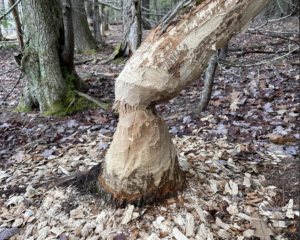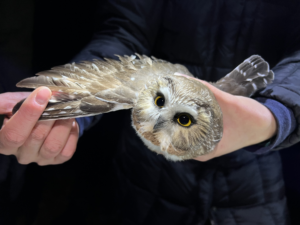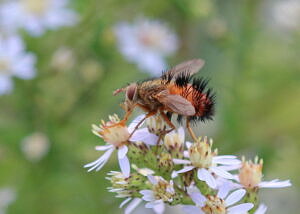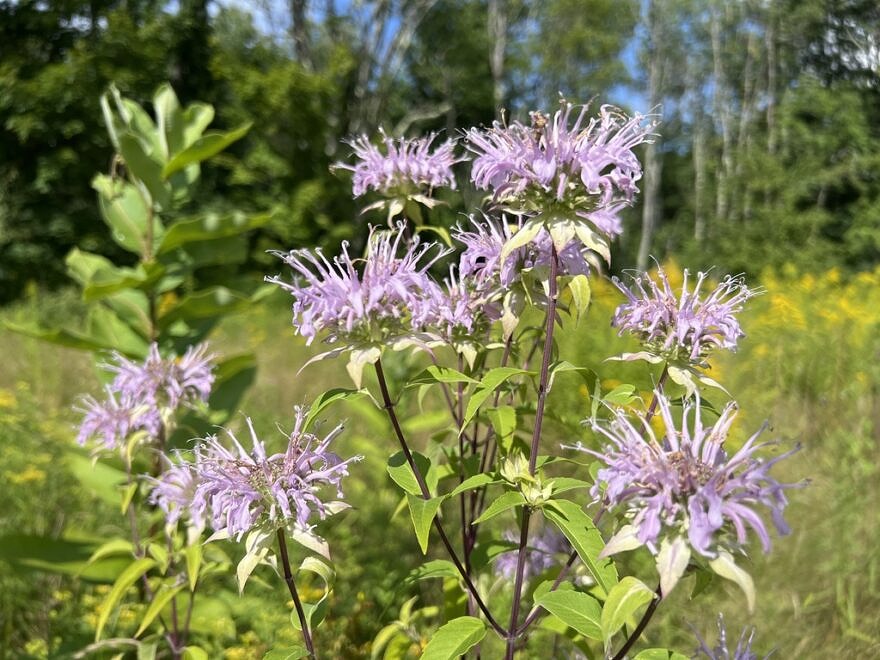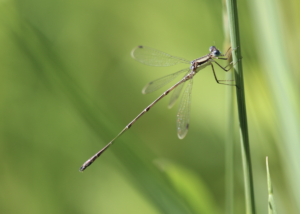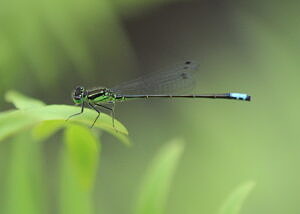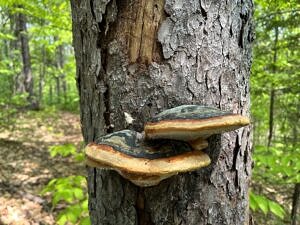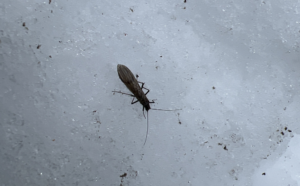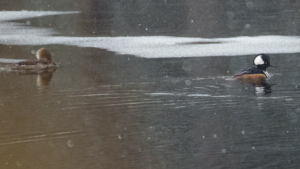The Monadnock Region is home to a fantastic array of organisms, from the smallest of insects to massive trees, long-lived turtles, and migrating raptors. On this page, we’ve featured some of the most interesting photo observations from the SuperSanctuary Biodiversity project on iNaturalist in 2023.
American Beaver (Castor canadensis)
December 5, 2023 | Hiroshi Land
The Harris Center’s Hiroshi Land in Peterborough is one of the best places in the SuperSanctuary to find beaver evidence (and perhaps even see a beaver!). iNaturalist user @audreylouise documented this observation of a tree that was recently felled by a resident beaver. Beavers do not hibernate and will stick wood in muddy banks of rivers and streams for food storage over the winter.
Northern Saw-whet Owl (Aegolius acadicus)
November 2, 2023 | Harris Center Headquarters
Not many birds are as charismatic and expressive as the Northern Saw-whet Owl, documented by @brett-amy-thelen at the Harris Center’s saw-whet owl banding station! Each October and November, saw-whet owls migrate through the Monadnock Region on their way from northern latitudes to southern overwintering areas. It is during these migrations that the Harris Center and other Project OwlNet partners bands, weighs, and measures saw-whets in an effort to better understand these diminutive birds of prey.
Spotted Salamander (Ambystoma maculatum)
October 27, 2023 | East Side Trails
iNaturalist user @brett-amy-thelen observed this spotted salamander while conducting one of our SPARCnet surveys. These surveys are primarily to document red-backed salamanders, but this first-year spotted was utilizing one of our coverboards for shelter. After hatching in vernal pools in the spring, spotted salamanders live as aquatic larvae over the summer; in the fall, with lungs and legs fully formed, they migrate out of their vernal pools to begin their fossorial (underground) life stage.
Hystricia abrupta
September 12, 2023 | Harris Center Headquarters
Check out this bizarre little fly, documented at the Harris Center by iNaturalist user @slamonde. Aptly, this bristly insect is a species of bristle fly, in the family Tachinidae. Hystricia abrupta occurs throughout North America, so keep your eyes peeled for one anywhere you’re amongst the flowers.
Wild Bergamot (Monarda fistulosa)
August 8, 2023 | Hiroshi Land
Commonly referred to as “bee balm,” wild bergamot is native and abundant throughout much of North America. Beautiful to behold, bergamot also boasts an array of medicinal uses. Many Native Americans have used bergamot to treat headaches, relieve colds, and cure stomach pains, among other uses (USDA). iNaturalist user @brett-amy-thelen captured this photo on our Hiroshi Land in Peterborough.
Slender Spreadwing (Lestes rectangularis)
July 22, 2023 | Harris Center Headquarters
iNaturalist user @slamonde documented this slender spreadwing at the Harris Center Headquarters in Hancock. Unlike many species of damselfly, which rest with their wings folded together, spreadwings rest with their wings projected outward, similar to dragonflies. However, spreadwings are much more delicate in appearance than dragonflies, with narrower wings and bodies.
Eastern forktail (Ischnura verticalis)
June 6, 2023 | Hiroshi Land
iNaturalist user @slamonde captured this beautiful shot of an Eastern forktail damselfly on the Hiroshi Land in Peterborough. Damselflies inhabit a variety of wetland habitats, so it was no surprise that this individual was found along the banks of Nubanusit Brook. This is a male, easily identifiable by its green and black coloring and blue tail tip.
Northern red belt (Fomitopsis mounceae)
May 23, 2023 | Kulish Ledges and Partridge Woods
iNaturalist user @dontas documented this Northern red belt along the Kulish Ledge Trail in Nelson, New Hampshire. The red belt plays an important role as a decomposer in North American forests, decaying the heartwood and sapwood of dead conifers and hardwoods (USDA). Until 2019, this fungus was misidentified as Fomitopsis pinicola, which we now understand only occurs in Eurasia (Haight, 2019).
Eastern newt (Notophthalmus viridescens)
April 27, 2023 | East Side Trails
April is prime time for amphibian movement, including this Eastern newt documented by @audreylouise on our East Side Trails! Many amphibian species begin as aquatic larvae and eventually metamorphose into terrestrial or semi-aquatic adults. However, newts begin as aquatic larvae, morph into terrestrial juveniles known as “efts,” and then return to the water as adults. Each year, Harris Center volunteers help many efts across roads, along with thousands of other amphibians; for more information, visit our Salamander Crossing Brigades page!
Winter Stoneflies (Family Taeniopterygidae)
March 19, 2023 | Hiroshi Land
While winter is not a time associated with seeing bugs, certain insects have specially adapted to take advantage of the cold months. The winter stonefly is not an uncommon sight walking on snow near a stream or brook in the depths of winter. The nymphs of this species are aquatic and are an indicator of good water quality, so if you’re seeing this critter, you’re surely near a healthy water body! @brett-amy-thelen documented this individual along Nubanusit Brook on our Hiroshi Land in Peterborough.
Hooded Merganser (Lophodytes cucullatus)
February 28, 2023 | Hiroshi Land
By February, most ducks have left our area, traveling south and east to escape iced-over lakes and ponds. Occasionally, lingering ducks can be found where moving water prevents ice from forming, such as this pair of Hooded Mergansers documented by @tmomeyer in Nubanusit Brook on our Hiroshi Land in Peterborough. The aptly named Hooded Mergansers are known for their feathered hoods and small bills, which they use to hunt for fish, crayfish, and other moving prey.
Evening Grosbeak (Coccothraustes vespertinus)
January 21, 2023 | Harris Center Headquarters
iNaturalist user @lma82 documented these Evening Grosbeaks at the bird feeders right here at the Harris Center Headquarters in Hancock! Once a common sight throughout southern New Hampshire, Evening Grosbeak populations have dropped as much as 92% since 1970 (Partners in Flight). These charismatic yellow birds are now irruptive, which means that, in certain years, they appear in our area in large flocks, while other years, they’re absent.
Contact Us
For more information about using iNaturalist in the SuperSanctuary, please contact our staff ecologist Nate Marchessault at (603) 525-3394 or by email.
